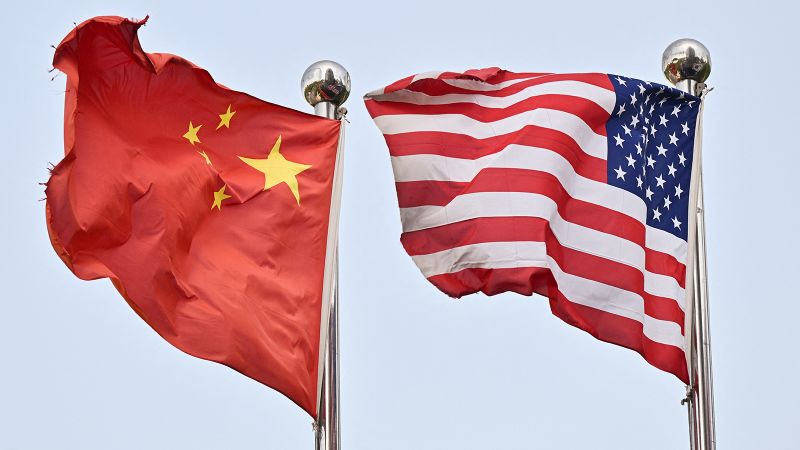In the context of ongoing global economic tensions, the third meeting in three months between US and Chinese officials is taking place in Europe, signaling a crucial moment in trade negotiations. This time, however, Beijing enters the discussions with a newfound confidence, bolstered by its strategic control over vital minerals. Such leverage has prompted the US to ease certain export restrictions, including notably reversing a ban on the sale of an essential Nvidia AI chip that had been previously prohibitive.
Recent data from the Chinese government reveals that the country’s economy has shown resilient growth throughout the ongoing trade war, even recording a historic trade surplus. This strong economic performance indicates that China is successfully pivoting its export markets away from dependency on the United States. Supporting this positive outlook, Beijing’s recent assertions at a European Union summit displayed little concern in addressing repeated grievances related to trade imbalances and the conflict in Ukraine.
As negotiations are set to commence in Stockholm, the Chinese delegation, led by Vice Premier He Lifeng, is anticipated to adopt a firm stance. They are likely to come to the talks expecting further concessions from Washington, reflecting their increasing boldness amid a supportive economic backdrop.
Treasury Secretary Scott Bessent heads the American delegation and has mentioned that discussions will revolve around extending a current trade truce that is due to expire on August 12. This temporary reprieve, negotiated during a meeting in Geneva, previously halted the imposition of harsh tariffs that could have jeopardized commerce between these two economic powerhouses. Continued talks in London were instrumental in avoiding a potential collapse of this truce, as both sides engaged in mutual accusations of not fulfilling their commitments.
The significance of the Stockholm discussions lies in their potential to provide insights into the sustainability of this uneasy peace and the possibility of resolving outstanding tariffs and contentious issues surrounding technology restrictions.
The backdrop against which these negotiations unfold includes US President Donald Trump’s recent trade agreements with various countries, alongside his softer rhetoric regarding relations with China. Trump has even expressed enthusiasm about potentially visiting China at the invitation of President Xi Jinping, signifying a shift from a confrontational approach.
Economics expert Josh Lipsky suggests that a temporary agreement might be the most realistic expectation from these delicately poised negotiations. He anticipates a continuation of the existing tariff rate of 30%, suggesting that a meeting between Trump and Xi could be on the horizon later in the year.
However, the situation remains fluid and unpredictable, as demonstrated by the recent travel bans imposed by Chinese authorities on a US Commerce Department employee and a Wells Fargo executive, provoking sharp criticism from US officials. On a constructive note, Bessent remains optimistic about the future of US-China trade relations, asserting an improved engagement climate.
Key topics on the negotiation agenda for both sides will include the remaining tariffs on Chinese imports, with significant pressure from China to remove tariff increases previously enacted under the pretext of combating fentanyl trafficking. Notably, China has recently tightened its regulations surrounding fentanyl precursors, which may serve as a negotiating lever in the discussions.
As the talks advance, Chinese experts emphasize their anticipation of outcomes that build on previous agreements and yield tangible results. They hope to dismantle the tariff restrictions perceived as punitive, focusing particularly on those related to fentanyl.
Meanwhile, experts assert that China’s influence and negotiating position have shifted significantly due to its crucial role in global supply chains, particularly in sectors such as rare earth minerals. These materials are vital for a wide range of technologies, from everyday electronics to military applications. China’s careful management of its rare earths supply has proven pivotal, especially amid heightened international scrutiny and response from the US government regarding tariffs and tech restrictions.
Ultimately, the trade dialogue reflects not only economic concerns but also profound geopolitical undercurrents, including trade agreements with other nations and China’s strategic partnerships. The upcoming negotiations in Stockholm promise to be a critical juncture, potentially setting the stage for either further conflict or a degree of cooperative engagement that can both sustain economic growth and stabilize a precarious global trade environment.












